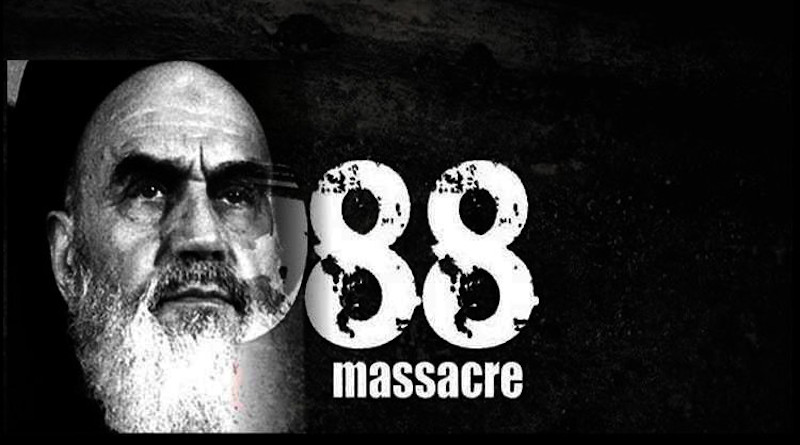Iran: A Massacre In Silence – OpEd
By Hamid Enayat
Four years ago, there was started in Iran a lawsuit campaign for the massacre of prisoners that took place in 1988. Such popular demand spread everywhere both inside and outside the country after the release, in 2016, of a voice recording that cleared up many ambiguities.
Such recording contained a conversation that Hussein-Ali Montazeri -the successor of Ruhollah Khomeini at that time- held in a meeting with which years later would be known as the “death commission”.
One year later, with more revelations about the massacre, the supreme leader Ali Khamenei took a position: “The 1980s is a silenced and at the same time, very important decade in the history of the Islamic Revolution. A decade that has been recently invaded by some tribunes of speech and their owners. Be cautious not to take executioners for martyrs” (Fars News, June 2017).
The lawsuit turned into a campaign against Khamenei and the continuous effort of a young generation for revealing details about the massacre. This generation did not witness this page of history.
Why a massacre?
The 1988 massacre of political prisoners was an opportunity for Iran’s regime to get rid of their main opposition force, People’s Mujahedin of Iran, forever. Some officials claimed that the reason for this massacre was the operation of the liberation army, the armed opposition force that was located in Iraq in 1988. However, evidence showed that the massacre had been decided and planned for months, maybe years before.
In two and a half years after the 1979 revolution, vigilantes linked to the regime (which later became the body of the Islamic Revolutionary Guard Corps) attacked their main opposition, People’s Mujahedin. 71 were killed while thousands were injured and tortured.
In the peak of that attack, Khomeini gave a speech where he said Mujahedin was his and the regime’s main enemy. “They are worse than the pagans”, he stated and issued the Sharia permission for preparing for the massacre.
Based on this order, a systematic killing of Mujahedin started on June 20, 1981. That day, the Islamic revolutionary guards opened fire to the peaceful demonstration of 500,000 people in Tehran killing many of them and arresting and then executing others.
In this way, the era of murder and executions in Iran began. The state-run newspapers published photos of some 15, 16-year-old girls with the quote: “We executed them but we do not know who they are” and asked their parents to identify their children’s bodies. The name of Mujahedin was forbidden and whoever was in contact with them in any way was arrested, tortured, or executed.
In September 1981, clergy Mohammadi Gilani, Judge of Sharia said: “According to Quran, this is the sentence for Mujahedin: Killing in the most harshly way, hanging in the most embarrassing form possible and cutting off the right hand and the left leg”.
During a Friday prayer held in September of 1981, Hashemi Rafsanjani, the former president who was at that time the chief of parliament, said: “They have four sentences: first is getting killed, second is getting hung, third is having right hand and left leg cut off, and fourth is getting excluded from the society”.
At the same time, clergy Mohammadi Gilani said: “Based on Khomeini’s order, we can take the lives of prisoners under torture and there is no need for court procedure”. The chase and killing of the Mujahedin continued from June 1981 to the summer of 1988.
The ceasefire and the execution
In 1988, Khomeini’s regime could never attract the lower-classes again. The international pressure over it was a lot and most importantly, Mujahedin’s armed opposition force, which had conquered a few border towns from Iraq, was also a threat. Khomeini’s regime had no choice other than accepting the ceasefire.
Khomeini, that had always claimed that they would fight until “the last brick of the last house of Tehran” remained, had no choice but to recess after 2 million Iranian resulted dead or injured. But he wanted to recover from this failure by the use of a massacre. Maybe this way he could get rid of the nightmare of his downfall.
Amnesty International has called the event of 1988 “the unpunished massacre” because many members of the death commission are now in the highest official positions of power such as Ebrahim Raisi, the current Chief of Justice, and Avaee the Minister of Justice.
By leaving this massive crime unpunished, Iran’s regime was enabled to commit all sorts of crimes such as the murder of Zahra Kazemi, the Iranian-Canadian photojournalist, or the killing of 176 passengers of the Ukraine plane, an event that was never clearly explained by them. Now, it is time for the international community to audit the regime for the massacre of 1988 and all the other crimes.
In the end, Khomeini decided to officialise the implicit order of massacre by issuing an order of execution for all the Mujahed prisoners and fighters in 1988. This decision was made a while before the operation of the liberation army and had been prepared in advance. The death commissions had been also previously established and their instructions were defined.
Morgan Ortagus, the speaker of the U.S Ministry of Foreign Affairs, said last July 18: “The 19th of July is the anniversary of the commission deaths’ birth in Iran. Those, who executed thousands of political prisoners, illegally”.
The clerical regime executed more than 30,000 political prisoners in the hot summer of 1988. Those responsible for the unpunished massacre are now occupying the highest positions of the clerical regime. The regime’s crimes remain unanswered in Iran, Argentina, and other countries. It is now time that the international community does a proper audit of all this.

